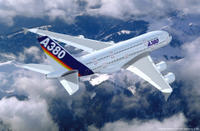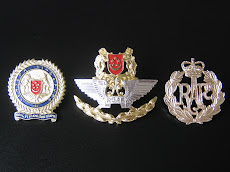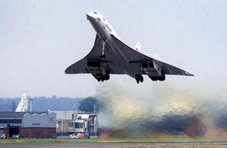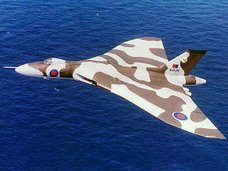ABBRE-AVIATION: Codes, Glossary and Short-forms
Technical Short-forms
ABDR: Aircraft Battle Damage Repair. Quick-fix repairs carried out on aircraft damaged during air operations. Usually temporary in nature, such repairs enable warplanes to be serviceable quickly until when time permits, permanent repairs can be done.
DME: Distance Measuring Equipment.
FOD: Foreign Object Damage. Aircraft damage caused by external articles such as unaccounted servicing tools interfering with aircraft systems. Runway debris ingested by aircraft jet engines, causing internal damage, is another example.
OBOGS: On-board Oxygen Generation System. A device in combat aircraft, for manufacturing oxygen, to support the crew.
PSP: Perforated Steel Plate. Steel plates laid over soft ground to provide a hard stand or tarmac for aircraft parking or taxiing. Such reinforcement is used extensively in airfields with vast tracts of unpaved ground or grassland.
VOR: Very High Frequency Omni-Range. A vital radio navigational aid.
International Organisations
IATA: International Air Transport Association. The international body of affiliation, headquartered in Montreal, for airlines and air-freight companies.
ICAO: International Civil Aviation Organisation. The international body of affiliation, headquartered in Geneva, for civil aviation authorities of national jurisdictions.
National Organisations
CAA: Civil Aviation Authority: Britain's civil aviation authority.
CAAS: Civil Aviation Authority of Singapore. Singapore's equivalent of the CAA.
FAA: Federal Aviation Administration. The United States' civil aviation authority.
QANTAS: Queensland and Northern Territory Aerial Service. Quaint initials which represent Australia's national airline.
NTSB: National Transportation Safety Board. The body responsible for public transport safety in the United States.
RAeS: Royal Aeronautical Society. The British body which protects and further the interests of Aerospace and aeronautical engineers and technologists.
SLAET: Society of Licensed Aircraft Engineers and Technologists. The defunct British society of affiliation for British aircraft maintenance engineers and technologists. Now, it forms part of RAeS.
Appointments
CAF: Chief of Air Force - The head of the air force in the Republic of Singapore and several other Asian countries.
CAS: Chief of Air Staff - Britain's head of the Royal Air Force, a position not unlike CAF described above.
Documentation & Publications
AP: Air Publication - Prefix used by Britain's Royal Air Force to classify and identify official publications. These deal with matters on air operations, aircraft engineering, administration, medical services, physical education and others. Example: AP 3402 (Standard Trade Training Notes: Airframe, Propulsion and Weapons Trades - Trade Practices and Servicing Procedures).
AAP: Australian Air Publication - Similar to RAF's APs, the Royal Australian Air Force uses this prefix for its official publications.
NOTAM: Notice To Airmen - a safety update to inform pilots and other aircrew affected, on matters relating to airways, airspace, airports and navigational aids.
SB: Service Bulletin - a manufacturer's bulletin detailing equipment engineering issues such as modifications, safety situations and technical inspections.
SI: Servicing Instruction - Aircraft and component manufacturers (and certain air forces) issue SIs to end-users to call for periodic safety inspections. Such checks are usually recurring in compliance requirement.
STI: Special Technical Instruction - Similar to SIs in purpose, but STIs are more urgent and has critical safety implications. An STI is usually a one-time check.
TCTO: Time Compliance Technical Order - a United States Air Force technical document for embodying equipment modifications or carrying out safety inspections and repairs.
TO: Technical Order - Like British AP's, the United States Air Force uses this prefix to classify and identify its official publications. See AP above.
IATA - ICAO Codes of Airports and Cities
AKL - NZAA: Auckland - New Zealand
ANC - PANC: Ted Stevens Anchorage International Airport - Alaska, United States
BKK - VTBD: Don Muang International Airport - Bangkok, Thailand
BOS - KBOS: Logan International Airport - Boston, United States
BNE - YBBN: Brisbane Eagle Farm Airport - Brisbane, Australia
BUE: Buenos Aires, Argentina
DBX: Dubai
DCA - KDCA: Ronald Reagan National Airport - Washington DC, United States
HKG - VHHH: Chek Lap Kok Airport - Hongkong, China
IAD - KIAD: Washington Dulles International Airport - Virginia, United States
JFK - KJFK: John F Kennedy International Airport - New York, United States
KUA - WMKD: Kuantan Airport - Kuantan, Pahang, Malaysia
KUL- WMKK: Kuala Lumpur International Airport (Sepang) - Kuala Lumpur, Malaysia
LAX: Los Angeles, United States
LHR - EGLL: Heathrow Airport - London, England
LON: London, United Kingdom
MEL - YMML: Tullamarine Airport - Melbourne, Australia
NYC: New York, United States
ORD - KORD: O'Hare International Airport - Chicago, United States
PAR: Paris, France
PEK: Capital Airport - Beijing, China
RIO: Rio De Janeiro, Brazil
SEL: Seoul, South Korea
SFO - KSFO: San Francisco International Airport - California, United States
SIN - WSSS : Singapore Changi Airport - Singapore
SYD - YSSY: Sydney Kingsford-Smith International Airport - Sydney, Australia
TLS - LFBO: Toulouse - Blagnac Airport - Toulouse, France
TPE: Taipei, Taiwan
TYO: Tokyo, Japan
YWG - CYWG: Winnipeg International Airport - Manitoba, Canada
YYZ - CYYZ: Toronto - Lester B Pearson International Airport - Ontario, Canada
XSP - WSSL: Singapore Seletar Airport - Singapore
YVR - CYVR: Vancouver International Airport - Richmond, BC, Canada
Airlines' Codes
BA: British Airways
CX: Cathay Pacific Airways
MH: Malaysian Airlines
MI: SilkAir
QF: Qantas Airways
SQ: Singapore Airlines
TG: Thai Airways
Glossary
Aileron: Control surface which turns the aircraft around its longitudinal axis. Together with the rudder, it helps the aeroplane to bank left or right. Ailerons are located at the out-board trailing edge of the port and starboard mainplanes.
Air Brake: Device, normally located on the mainplanes, used for slowing landing speed before the aeroplane stops. Fitted flush with the mainplane's exterior, air brakes protrude when deployed to hinder slip-stream, hence induce drag. They are also known as 'spoilers', an American term.
Airframe: Aeronautical term referring to an aircraft's structure including wings, fuselage and empennage. It covers exterior parts: structural skin, cowlings, panels, fairings, etc; and internal parts: longerons, ribs, spars, bulkheads, etc.
Avgas: Acronym for Aviation Gasoline (Fuel). Aircraft with piston-propulsion engine uses this fuel type which comes in several ratings for different engine categories.
Avtur: Acronym for Aviation Turbine Jet (Fuel). Turbine-powered and turbo-prop (turbine-propeller) driven aircraft use this fuel type.
Bowser: Mobile tanker for refuelling aircraft - a common term used by flight-line airmen, especially in the Royal Air Force.
Elevator: Control surface which turns the aircraft around its lateral axis. It pitches the aircraft nose-up for climb and rotation (R2) or take-off, and nose-down for dive or landing. Elevators are located at the trailing edge of the port and starboard tailplanes.
Flap: Aircraft control surface which helps maintain lift at low speed during the landing phase. Flaps are located at the in-board trailing edge of port and starboard wings.
Marshaller: A groundcrew responsible for guiding an aircraft taxiing in to or out from its parking lot at the airport's tarmac or dispersal. The equivalent Australian term is: Batsman.
Pitot-static tube: Device, usually located at the aeroplane's nose, which measures the aircraft's speed.
Port: Aeronautical and navigational term for the left side.
Rudder: Control surface located along the trailing edge of the aircraft's fin. It helps the craft to turn around its vertical axis.
Starboard: Aeronautical and navigational term for the right side.
Thermocouple: Sensor installed aft of a jet-engine turbine used for measuring the exhaust temperature.
Winglet: Airfoil extension at port and starboard mainplane tips. Winglets help to reduce wake turbulence and fuel-burn.
Zulu Hours: Time system equivalent to Greenwich Mean Time (GMT) used by NATO military forces. Example - 00:59Z
International Phonetic Code
A for Alpha
B for Bravo
C for Charlie
D for Delta
E for Echo
F for Foxtrot
G for Golf
H for Hotel
I for India
J for Juliet
K for Kilo
L for Lima
M for Mike
N for November
O for Oscar
P for Papa
Q for Quebec
R for Romeo
S for Sierra
T for Tango
U for Uniform
V for Victor
W for Whiskey
X for X-ray
Y for Yankee
Z for Zulu






